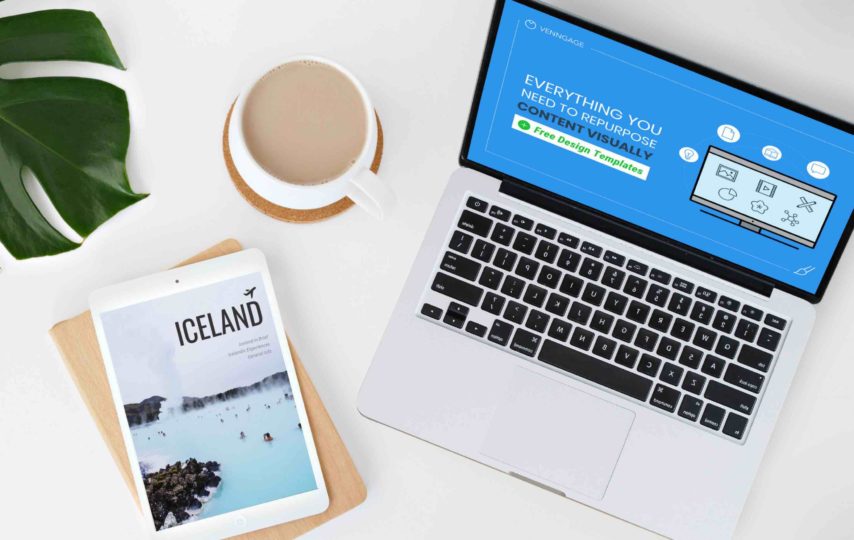Creating a design is an art, and ever heard of art having boundaries? No, right. If you think you can never ace graphic designing ever. You probably need to correct yourself. This skill is something, no one can run from. Every person at some point in their life thinks it would’ve been much better if they had learned and practiced basics of graphic designing. Well, now is the time to learn it bit by bit and ace it in the longer run.
People often skip the necessary steps calling is ‘very basic’ and jump to practice the high-level design features and principles, which is completely wrong. They miss the point ‘how could you learn something greater if you don’t even know how the basics work.’ Without knowing the basics no one can design anything, let it be a high tech mobile apps or even custom mailer boxes.
This puts them into the troubles, and eventually, just like they’ve skipped the basics, they give up on the whole course itself. Getting your expertise on a single feature of designing is itself quite tiring because it demands practice, but we assure you it is always fun at the same time. If you manage to equip yourself with a few famous and extremely basic techniques, the whole course becomes a piece of cake.
Working with blurred backgrounds is one of the very simple yet very elegant techniques used in designing either they are posters, web designs, or any other template. Here we will discuss this specific technique in detail and see how you can improve your designs when you want your backgrounds blurred.
Tip 1: Focus
The whole reason we are implementing the blurred background is to lay more stress on something that is the whole soul of your design. Make sure you focus well on the object that needs to be seen and does not intermix with the blurred image in the background. Sometimes, people also try to focus on just more than one key area and want to highlight more. Fulfilling this need, they think it is okay to heavily blurring the background while highlighting just how they want. This is not what you should ever do. The whole purpose of focusing on the subject is lost if you are doing this.
Tip 2: Choose the right image/color for your background
Since you are designing for digital purposes, it means your design would interact with the users digitally first and maybe after a long time into physical form. You need to make sure it looks beautiful and perfect digitally as well. Do not mistake the design by choosing an image of the same color transparency. If your text or object you want to focus on is of darker shades, put a lighter color image in the background, and if it is of lighter tones, try using a darker background. This is the very basic principle defined according to the HCI (Human-Computer Interaction) experts. This not only pleases the eyes but increases the efficiency of users in the case of web screens.
Tip 3: Aesthetically pleasing
Whatever you are designing, just make sure the design is pleasing your eyes. And not only have your eyes but looked it through the eye of a general user. Try to create fake personas, write them down, and imagine how such a person would feel when they might look at the design. If the aesthetics of the design are perfect, trust me, no one can ever stop your design from reaching out to the maximum audience. Note that you can add work on aesthetics according to your aesthetic sense and techniques. One of the majorly used techniques for increasing the beauty of the design while using a blurred background is to place your subject at 1/3rd of the horizontal axis. Photographers frequently use this technique, and now graphic designers are also using it to make their design look more natural.
Tip 4: Opacity
If you are designing for more than one screens of the same project, make sure the opacity of the blurring effect in the background of one image matches with the other image. In case you don’t do it, it would create an inconsistent design. Opacity not only causes the issue of inconsistency but also sometimes, the ratio of the opacity on the same page needs to differ. Usually, the top of the page is slightly blurred while the opacity of blur keeps increasing downwards or vice versa. This effect adds motion into the background, and your design doesn’t just look bland.
Tip 5: Maintain Subtleness
Subtleness is one principle of design you should not let go. Most of the designs require themselves to be subtle until or unless you are working on some abstract design. Do not leave sharp edges between the front subject and the blurred background. This makes the design look totally unprofessional. Try to blend every color into each other, so there are lesser sharp Edges, stinging in the eyes.
Tip 6: Typography
While using a text on the top of a blurred background, make sure to select the right fonts for it. Try choosing the bolder and the ones making a statement. We would suggest you maintain the symmetrical boundaries of the text in such cases else it would look messed up and cluttered. Try using the fonts that are thicker but keep varying every sentence of the text with a different thickness of the same font style.
Tip 7: Dramatic blur
You can usually try this kind of blur effect with abstract designs. The element of surprise in the background blur can change your design game from zero to 100, only if you do it correctly and naturally. Dramatically blurring the background makes the image almost unrecognizable, enhancing the keenness of the users. It creates a background that is customized unlikely than the patterns used in other web designs
Tip 8: Layered blur
If you need your design to be really out of the box, you can sometimes add a layered blur in your images or design. This kind of blur gives an unusual vibe and captures the attention of many users. Hence, it helps your design keep focusing on the main content.
Tip 9: Keep it simple
While designing, don’t overthink, just start creating something and trust us, it will eventually turn out to be something where you can critique yourself remembering every principle you’ve learned. Try to keep things very simple in the beginning and make sure the blurring of the background also makes your design look simple and effortless.
Tip 10: Do “You”!
Trust your guts and aesthetics because, as told before, this is not a competition, but it’s an art and art that allow you to think in multiple dimensions. Do what entertains your heart and makes you confident. If you feel certain opacity of the background blur is what defines your personality, just do it. You will learn everything step by step.
Conclusion
Concluding all these details, we just have to say that make sure you keep your design clean and tidy yet mesmerizing. The aesthetic definitely plays a big role in the success of you being a graphic designer. Therefore, it is recommended that you maximize your aesthetic sense from nature. No one is born an expert you need to keep making mistakes for that. Blurred images and designs have always been trendy enough to be catchy, and the technique is a basis of designing, learn it by heart, and you’ll see yourself winning over everything.
Good luck!







